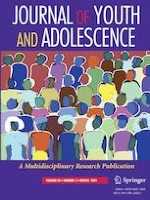20-06-2020 | Empirical Research
Victimization by Friends and Victimization by Other Peers: Common Risk Factors or Mutual Influence?
Gepubliceerd in: Journal of Youth and Adolescence | Uitgave 3/2021
Log in om toegang te krijgenAbstract
Much research effort has been placed on understanding peer victimization. However, few studies have focused on victimization within friendships, which affects up to half of adolescents and bears similar consequences as victimization by the larger peer group. This study examined the temporal stability and the risk factors of victimization within friendships and victimization by other peers. In regard to the first objective, moderate to high levels of stability over a one-year period were expected for victimization by friends and by other peers. In regard to the second objective, two – not necessarily mutual exclusive – hypotheses were tested. The Common Risk Factors Hypothesis postulated that victimization by friends and by other peers share common personal and familial risk factors. Alternatively, the Mutual Influence Hypothesis proposed that victimization within one relationship context may increase the risk of being victimized in the other relationship context. These hypotheses were tested with a sample of 878 adolescents (Mage = 15.08 years, range 14.50–15.75; 52% female) assessed in Grades 8 and 9. Structural equation modeling revealed moderate and weak one-year stability for victimization by friends and by other peers, respectively. No common risk factors emerged, but victimization within one relationship context increased the risk of victimization in the other relationship context one year later. These results are in line with the mutual influence hypothesis and provide evidence of a cross-context transfer of victimization in adolescence.
